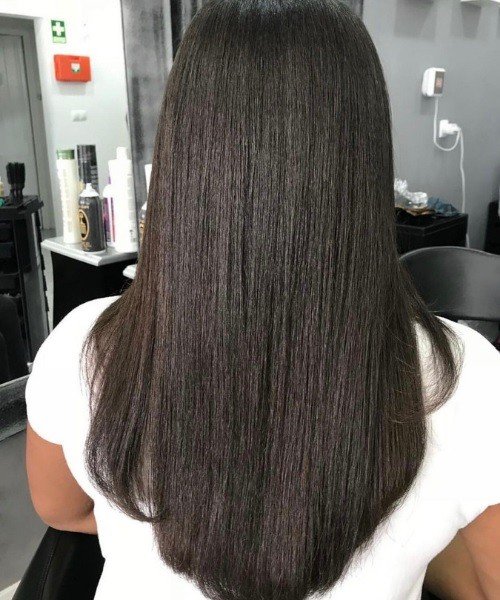This post contains affiliate links.
Updated on April 13, 2025
The transition from relaxed to natural hair can be one of the most challenging decisions. Many things completely change and the journey may not be as easy. Hard work and dedicated consistency are needed, but the regretting chances are very few. Some even consider it to be the best decision afterward.
The difference between relaxed hair and natural is unlike the relaxed type, natural hair can need a lot of taking care and the hair is considered to be growing from the scalp with zero altercation put to it.
In terms of altercations, no hair creams or any chemicals are applied. It is completely the opposite of the natural and easily managed in most instances for relaxed hair.

Here are a few tips that will make the transition easier and more manageable.
Once the decision is made to turn to natural hair, some may consider the big chop and start fresh.
Others may decide to slow and allow the natural growing start while trimming off the permed ends. This can be beneficial since the original or desired length is not interfered with and also, if not trimmed down, it may result in easy breakage and resulting in weak hair.
It interrupts healthy growth and hair length in the long run. Gradual trimming is essential and should be done when one is ready to let go of a few inches. A very normal occurrence is that around the line where the natural hair meets the permed hair, there may be some breakage, which is very normal.
One tip is to take your hair slow and easy. One of the benefits of going natural is the hair’s body and volume are restored. To achieve this, you will need to treat yourself very delicately and give it much attention.
This goes down to asking for professional advice on simple things such as what to wash your hair with, watching videos on people’s videos with experienced tactics on growing natural hair and even the suitable hairstyles.
This means that the hair should not be too strained or held too tight and has a very high maintenance level. This could mean regular visits to the salon or regularly maintaining the hair by oneself. The secret is just giving the hair a lot of care.
Also, you want to learn about your hair and its new growth. This means that time will be required to have a clear understanding. Transitioning from relaxed hair may have inevitable changes since the hair course may not be as easy as when permed and the hair may feel dry, making things a little difficult.
That is why I needed to learn that natural hair will need to be moisturized most of the time and know the duration and intervals needed for the next moisturizing.
Moisturizing is one of the tough challenges since it’s not mandatory to do it with relaxed hair, but then with natural hair, it is more a priority to an easy journey.
Lack of doing so may lead to the hair becoming very dry and brittle, contributing to breakage. Water is now an essential, unlike permed hair where water may break your hair.
Switching to different hair washing methods is another tip to consider. Normally, with relaxed hair, you might use shampoo and later conditioning.
Natural hair shampoo is discouraged because the hair is stripped away from moisture, leaving it dry and coarse. Thorough conditioning is preferred to maintain the moisture and ease managing the hair.
Try moisturizing by spraying water every few days and using leave-in hair conditioners. If shampoo is preferred, it must be used at a minimal rate. Choosing the right hairstyles is also an essential part of the transitioning journey.
Here you have to work with very different preferences since this will be a change in textures. It is more laid down with relaxed hair, while with natural hair, sometimes even due to the increased volume, it tends to stand up and be puffy.
Preferred hairstyles could be braiding majorly to reduce handling the free hair often. This is because the hair is in a very delicate state.
Other hair-protecting styles can use wigs and weaves to help keep the hair still and undisturbed for a considered amount of time. Also, using these hairstyles will reduce the expected culture shock and increase your comfort and even confidence.
Trying out hair accessories may also ease the transitioning journey. This is a way to keep things a little spiced up instead of sticking to a monotonous method.
The accessories may include headbands and headscarves that range in colors, designs, and sizes.
Lastly, give your hair time to adjust to all the new changes. To have the transition will take some actual time and it may vary for different hair.
Patience is key; consistency is needed and generally just trusting the process. Some things may feel tiresome and time-consuming and some things may not work for your hair, but then the journey, as I stated in the beginning, maybe tough but it soon works out.
Roughly give yourself at least 4 to 6 months before choosing your next step.
You can go natural without cutting your hair since it’s making sure all the relaxed hair is off completely. Some may choose to do the big chop and there is absolutely nothing wrong with that.
Trimming being the most preferred method, it is advised to use the right hair cutting scissors if the process will be done by yourself at home.
If the change becomes hard, settling for protective hairstyles is strongly suggested before throwing in the towel.
However, remember that your hair is your pride, crown, and most certainly beautiful, whatever the choice is.
Recommended Articles:
- Best Hair Dyes For Natural Hair That Look Truly Natural
- Best Relaxers for Black Hair: Great For Afro 4a, 4b, And 4c Hair Types
- How to Remove Relaxer From Hair Without Cutting?

